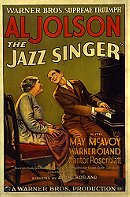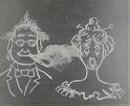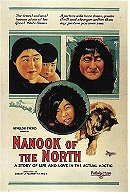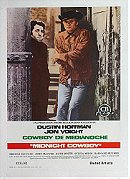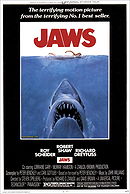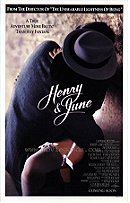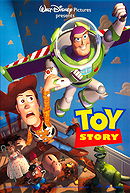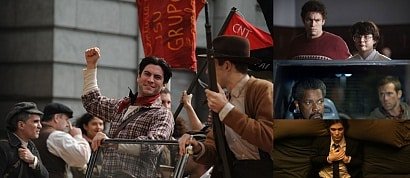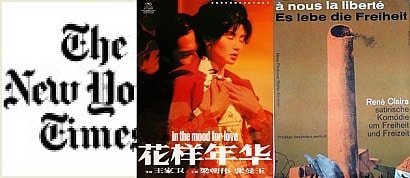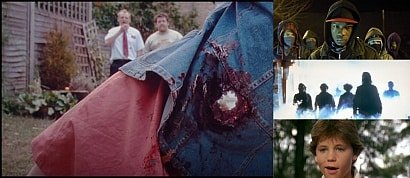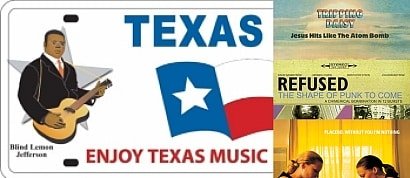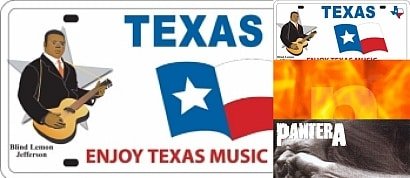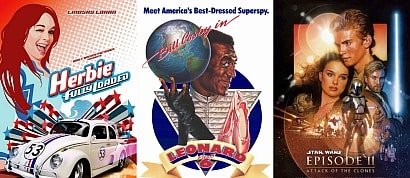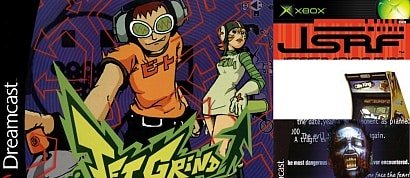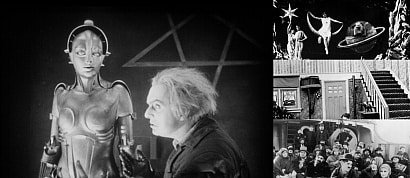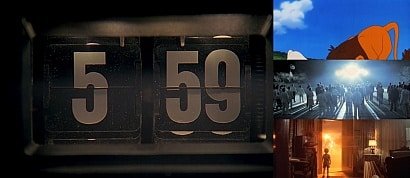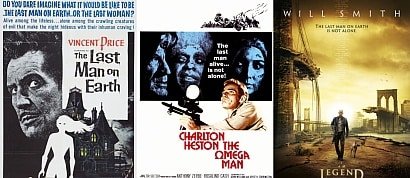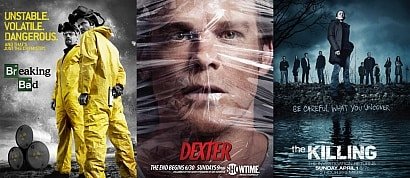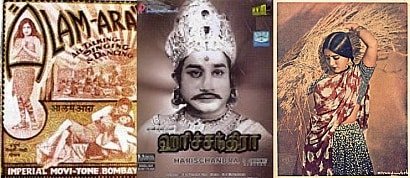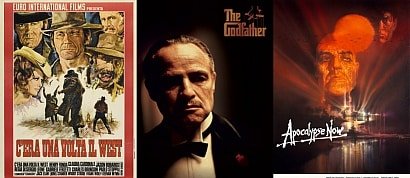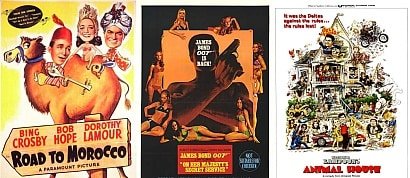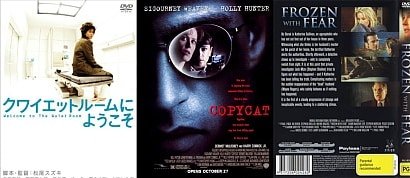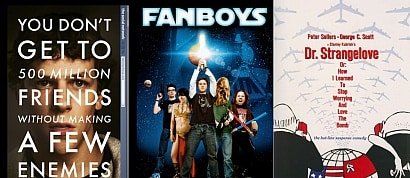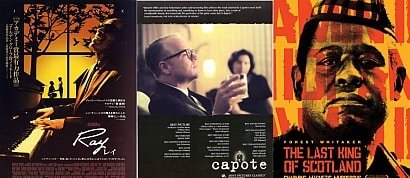Total Recall: Important Movie Firsts
Sort by:
Showing 10 items
Decade:
Rating:
List Type:
FIRST FEATURE-LENGTH FILM
Released in Australia on Boxing Day in 1906, The Story of the Kelly Gang was the first movie to break free from the confines of the short. This 60-plus-minute biopic of the legendary Aussie outlaw Ned Kelly billed itself as "The Most Sensational, The Most Thrilling and Interesting LIVING PICTURES EVER TAKEN," and it was an immediate lightning rod for controversy, as some authorities accused director Charles Tait of glorifying criminal behavior (some things never change). Only 17 minutes of the film survive today, and in 2006 Australia's National Film and Sound Archive restored what is left of the footage, much of which, including the climactic gunfight, remains compelling to this day.
Released in Australia on Boxing Day in 1906, The Story of the Kelly Gang was the first movie to break free from the confines of the short. This 60-plus-minute biopic of the legendary Aussie outlaw Ned Kelly billed itself as "The Most Sensational, The Most Thrilling and Interesting LIVING PICTURES EVER TAKEN," and it was an immediate lightning rod for controversy, as some authorities accused director Charles Tait of glorifying criminal behavior (some things never change). Only 17 minutes of the film survive today, and in 2006 Australia's National Film and Sound Archive restored what is left of the footage, much of which, including the climactic gunfight, remains compelling to this day.
FIRST FEATURE-LENGTH TALKIE
There's a reason The Jazz Singer, the first feature-length talkie (though not the first to incorporate sound, since 1926's Don Juan beat it on that count), is more of a cultural signpost than an enduring classic: it's the fact that star Al Jolson performs the film's showstopping number "Mammy" in blackface. With its emphasis on regressive stereotypes of African Americans, "corking up" has a rightfully odious reputation by today's standards, though it was a common practice on the stage for nearly a century (some black vaudeville performers also wore blackface). Jolson was himself no bigot, and was known for fighting segregation in the theater world. In The Jazz Singer, Jolson starred in a loose version of his life story, one that follows him from his traditional Jewish upbringing to stardom on the Broadway stage. Though the film is mostly a silent film with a few songs and bits of dialogue, audiences were thrilled when Jolson spoke his trademark (and weirdly prescient) line: "Wait a minute, wait a minute, you ain't heard nothin' yet."
There's a reason The Jazz Singer, the first feature-length talkie (though not the first to incorporate sound, since 1926's Don Juan beat it on that count), is more of a cultural signpost than an enduring classic: it's the fact that star Al Jolson performs the film's showstopping number "Mammy" in blackface. With its emphasis on regressive stereotypes of African Americans, "corking up" has a rightfully odious reputation by today's standards, though it was a common practice on the stage for nearly a century (some black vaudeville performers also wore blackface). Jolson was himself no bigot, and was known for fighting segregation in the theater world. In The Jazz Singer, Jolson starred in a loose version of his life story, one that follows him from his traditional Jewish upbringing to stardom on the Broadway stage. Though the film is mostly a silent film with a few songs and bits of dialogue, audiences were thrilled when Jolson spoke his trademark (and weirdly prescient) line: "Wait a minute, wait a minute, you ain't heard nothin' yet."
FIRST ANIMATED FILM
J. Stuart Blackton's Humorous Phases of Funny Faces may not have been the first film to utilize animation to some degree (Blackton's own The Enchanted Drawing predates it by six years), but historians cite Faces as the original of the form as we know it today. In the three-minute short, a cartoonist draws some faces on a chalkboard, and the drawings subsequently come to life. The film utilized stop motion and other effects (the chalk lines were actually cutouts), but the film inspired others to possibilities of animation.
J. Stuart Blackton's Humorous Phases of Funny Faces may not have been the first film to utilize animation to some degree (Blackton's own The Enchanted Drawing predates it by six years), but historians cite Faces as the original of the form as we know it today. In the three-minute short, a cartoonist draws some faces on a chalkboard, and the drawings subsequently come to life. The film utilized stop motion and other effects (the chalk lines were actually cutouts), but the film inspired others to possibilities of animation.
The Homesteader (1919)
first film by an african american director
Oscar Micheaux was an important cinematic pioneer with a troubling legacy. He was the first African American to direct a film (The Homesteader, now lost, based upon his own novel) and the first to direct a sound film (The Exile, from 1931). His work was a corrective to the prevailing stereotypes of blacks that were rampant in Hollywood at the time. However, his films are not particularly remembered for their quality, and contemporary critics find his treatment of working-class African Americans to be problematic. Still, Micheaux should be celebrated for forging new ground, and providing early roles to some of the finest black talent of the day (like the great Paul Robeson, playing a duel role in 1925's Body and Soul).
Oscar Micheaux was an important cinematic pioneer with a troubling legacy. He was the first African American to direct a film (The Homesteader, now lost, based upon his own novel) and the first to direct a sound film (The Exile, from 1931). His work was a corrective to the prevailing stereotypes of blacks that were rampant in Hollywood at the time. However, his films are not particularly remembered for their quality, and contemporary critics find his treatment of working-class African Americans to be problematic. Still, Micheaux should be celebrated for forging new ground, and providing early roles to some of the finest black talent of the day (like the great Paul Robeson, playing a duel role in 1925's Body and Soul).
Nanook of the North (1922)
FIRST FEATURE-LENGTH DOCUMENTARY:
Though not strictly a documentary by today's standards (many of scenes were staged for the cameras), Robert Flaherty's Nanook of the North was the first feature-length non-fiction film, and it remains one of the most influential and respected examples of the form. Shot in Quebec in 1920 and 1921, the film follows the Inuit Nanook (his real name was Allakariallak) and his family members as they struggle with the perils of the cold arctic environs. If Flaherty took plenty of liberties with the culture he was "documenting" (for example, many of the customs portrayed onscreen had been abandoned by the time film was shot), the film was a big success, and its sensitive, respectful treatment (for the time) of a way of life that was little-understood by many in the audience proved that cinema could transcend cultural barriers.
Though not strictly a documentary by today's standards (many of scenes were staged for the cameras), Robert Flaherty's Nanook of the North was the first feature-length non-fiction film, and it remains one of the most influential and respected examples of the form. Shot in Quebec in 1920 and 1921, the film follows the Inuit Nanook (his real name was Allakariallak) and his family members as they struggle with the perils of the cold arctic environs. If Flaherty took plenty of liberties with the culture he was "documenting" (for example, many of the customs portrayed onscreen had been abandoned by the time film was shot), the film was a big success, and its sensitive, respectful treatment (for the time) of a way of life that was little-understood by many in the audience proved that cinema could transcend cultural barriers.
Midnight Cowboy (1969)
FIRST X-RATED MOVIE TO WIN BEST PICTURE
John Schlesinger's chronicle of the seamy side of New York City may seem tame by today's standards, but it caused quite a stir upon its release in 1969. Because of several scenes of explicit sex, the film was slapped with an X-rating, meaning that no one under 17 could be admitted. It didn't much matter, as the film was a substantial hit, and picked up three Academy Awards, including Best Picture -- the first and only X-rated film to be so honored. However, after pornographic films appropriated the X-rating, the film was recertified as an R in 1971 without any cuts.
John Schlesinger's chronicle of the seamy side of New York City may seem tame by today's standards, but it caused quite a stir upon its release in 1969. Because of several scenes of explicit sex, the film was slapped with an X-rating, meaning that no one under 17 could be admitted. It didn't much matter, as the film was a substantial hit, and picked up three Academy Awards, including Best Picture -- the first and only X-rated film to be so honored. However, after pornographic films appropriated the X-rating, the film was recertified as an R in 1971 without any cuts.
C!pH3r's rating:


Jaws (1975)
FIRST WIDE RELEASE TO GROSS $100 MILLION AT THE BOX OFFICE
Jaws was a watershed picture for a number of reasons: it was the first wide-release summer blockbuster, it made Steven Spielberg a household name, and it was accused (unfairly) of bringing the auteurist-minded days of 1970s cinema to a close. It was also the first movie to make more than $100 million at the box office, a figure that seemed unthinkable to observers at the time. What put Jaws over the top wasn't just the fact that it was an expertly-crafted, darkly witty monster movie. Before Jaws, movies were released in major markets before dribbling out across the country to smaller cities. By opening the film wide across the country, Jaws, changed the way movies were distributed -- for better or worse.
Jaws was a watershed picture for a number of reasons: it was the first wide-release summer blockbuster, it made Steven Spielberg a household name, and it was accused (unfairly) of bringing the auteurist-minded days of 1970s cinema to a close. It was also the first movie to make more than $100 million at the box office, a figure that seemed unthinkable to observers at the time. What put Jaws over the top wasn't just the fact that it was an expertly-crafted, darkly witty monster movie. Before Jaws, movies were released in major markets before dribbling out across the country to smaller cities. By opening the film wide across the country, Jaws, changed the way movies were distributed -- for better or worse.
C!pH3r's rating:


Red Dawn (1984)
FIRST PG-13 MOVIE
After parental complaints about the level of violence in a number of PG films (particularly Gremlins and Indiana Jones and the Temple of Doom), the MPAA decided it needed a middle ground between the family-friendly PG rating and the adult-oriented R. (Interestingly, Steven Spielberg, who directed Temple of Doom and produced Gremlins, was one of the early advocates for the new distinction.) Red Dawn, starring Patrick Swayze and C. Thomas Howell in the tale of a Soviet invasion of a small Colorado town, was the first movie to hit theaters with the new rating - ironic, because it was considered one of the most violent films of its time. (The Flamingo Kid was the first movie to be given the new certification, but it was released after Red Dawn.)
After parental complaints about the level of violence in a number of PG films (particularly Gremlins and Indiana Jones and the Temple of Doom), the MPAA decided it needed a middle ground between the family-friendly PG rating and the adult-oriented R. (Interestingly, Steven Spielberg, who directed Temple of Doom and produced Gremlins, was one of the early advocates for the new distinction.) Red Dawn, starring Patrick Swayze and C. Thomas Howell in the tale of a Soviet invasion of a small Colorado town, was the first movie to hit theaters with the new rating - ironic, because it was considered one of the most violent films of its time. (The Flamingo Kid was the first movie to be given the new certification, but it was released after Red Dawn.)
Henry & June (1990)
FIRST MOVIE TO RECEIVE AN NC-17 RATING
The MPAA had ditched the X-Rating, but lacked a specific "adults only" category, and in the late 1980s and early 1990s, some particularly racy and/or violent films (like Henry: Portrait of a Serial Killer) opted out of the ratings system altogether. Philip Kaufman's Henry and June, about the wild dalliances of Henry Miller, his wife June, and writer Anais Nin in 1930s Paris, was the first film to go out with the new rating. It might have been sexually explicit, but this lush, sad film was no one's idea of porn. Still, because of the "adults only" nature of the rating, many newspapers and TV stations wouldn't carry ads for NC-17 movies. Showgirls was the first film to flaunt its NC-17, but the movie was a critical and commercial disaster, which furthered the NC-17 rating's rep as a kiss of death.
The MPAA had ditched the X-Rating, but lacked a specific "adults only" category, and in the late 1980s and early 1990s, some particularly racy and/or violent films (like Henry: Portrait of a Serial Killer) opted out of the ratings system altogether. Philip Kaufman's Henry and June, about the wild dalliances of Henry Miller, his wife June, and writer Anais Nin in 1930s Paris, was the first film to go out with the new rating. It might have been sexually explicit, but this lush, sad film was no one's idea of porn. Still, because of the "adults only" nature of the rating, many newspapers and TV stations wouldn't carry ads for NC-17 movies. Showgirls was the first film to flaunt its NC-17, but the movie was a critical and commercial disaster, which furthered the NC-17 rating's rep as a kiss of death.
Toy Story (1995)
FIRST CGI ANIMATED FEATURE
A box-office winner and one of the best-reviewed films in the history of this site, Toy Story's sheer enjoyability overshadows the fact that it's a profoundly influential film and an important landmark in the development of animated entertainment. After Pixar's pioneering short Tin Toy won an Oscar, Disney's attention was piqued, and the two companies agreed to work together on adventures of Woody, Buzz Lightyear, and the rest of the gang that resides in Andy Davis' toy box. After years of development (some of it contentious), Toy Story hit theaters in 1995 to near-universal acclaim, and though there have been many all-CGI films since, Toy Story still holds its own 13 years later; its smart, funny plot and near-perfect animation haven't aged a bit.
A box-office winner and one of the best-reviewed films in the history of this site, Toy Story's sheer enjoyability overshadows the fact that it's a profoundly influential film and an important landmark in the development of animated entertainment. After Pixar's pioneering short Tin Toy won an Oscar, Disney's attention was piqued, and the two companies agreed to work together on adventures of Woody, Buzz Lightyear, and the rest of the gang that resides in Andy Davis' toy box. After years of development (some of it contentious), Toy Story hit theaters in 1995 to near-universal acclaim, and though there have been many all-CGI films since, Toy Story still holds its own 13 years later; its smart, funny plot and near-perfect animation haven't aged a bit.
C!pH3r's rating:


Another list of Important movie firsts from Rotten Tomatoes
www.rottentomatoes.com/m/toy_story/news/1790944/1/total_recall_important_movie_firsts/
www.rottentomatoes.com/m/toy_story/news/1790944/1/total_recall_important_movie_firsts/
Added to
People who voted for this also voted for
Dear Cinema Diary - Vol 3 E9 - Sept 2012
My Assorted Lists
October 2012 Horrorfest
Best albums of 1998
Best albums of 1992
Fun Times with Siskel and Ebert and Roeper
Toast - Favorite Book Lists
Developed by: SmileBit
Films I saw in 2012
Dear Cinema Diary - Vol 3 E1 - Jan 2012
Pre-1940s favorite films
Movies the giraffe watched: February 2013
I am Legend
2009 Bram Stoker Award Winners
Summer 2013 TV Picks
More lists from C!pH3r
Indian Firsts in Film History
FilmTotaal top 250
Breaking The 4th Wall
Films Featuring Mental Illness
Movies those have multiple roles by same actor
Won All Five:Oscar,BAFTA,Golden Globe,SAG,Critic's
India Times Top 25 Must-See Bollywood Films
 Login
Login
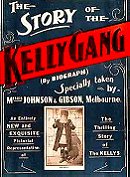
 25
25
 6.2
6.2
 6.3
6.3
